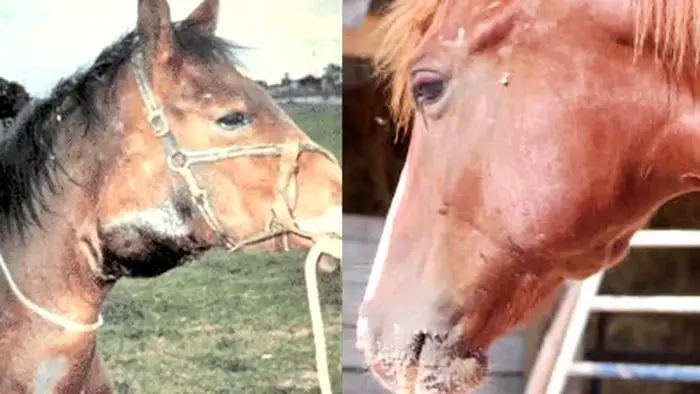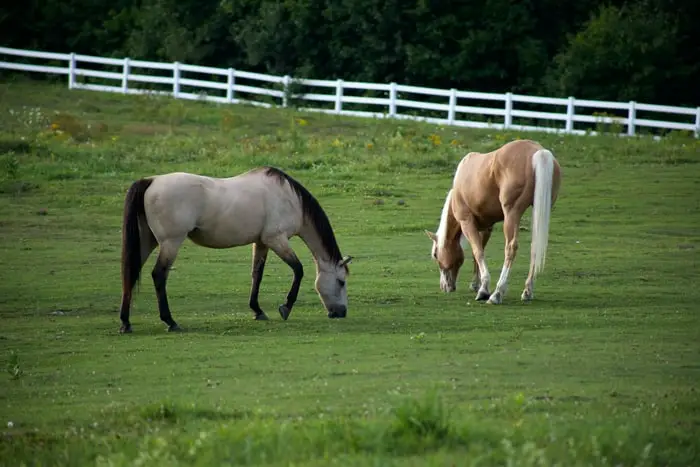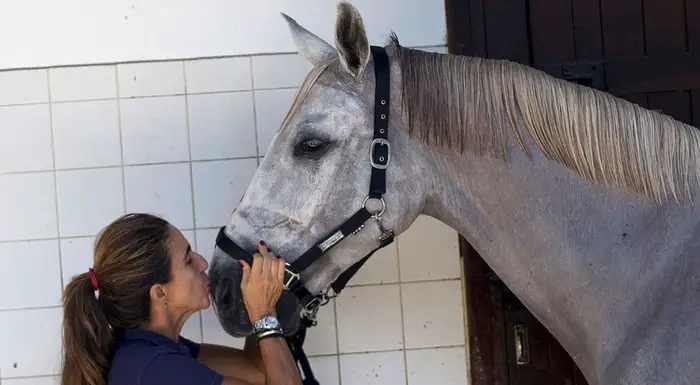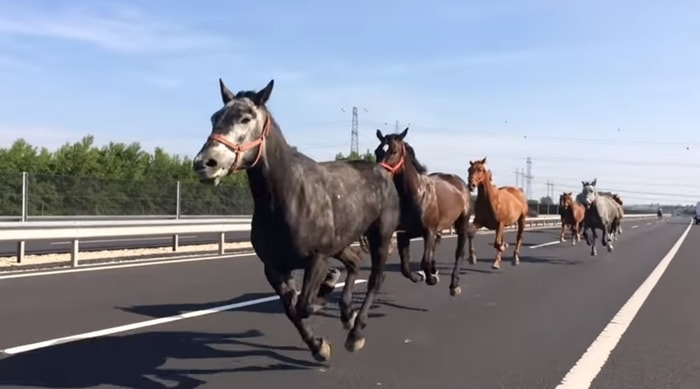Glanders is one of the oldest of all diseases recognized in horses. It is a contagious disease, usually fatal, caused by Pseudomonas mallei. A scourge of solipeds (horse, donkey, mule), Glanders was sporadically seen in an acute form in the donkey, in a subacute form in the mule, and in a chronic ( or even latent) form in the horse. Glanders in a wide variety of species, including humans and carnivores. Now it has been eradicated and controlled effectively in many countries.
The causal organism survives so poorly outsides these animals (hosts). The disease was always most frequent in horses used for military purposes or in the horses in the growing towns and towns of the second half of the 19th century. In London, for example, there was a minimum of 1000 clinical cases of Glanders annually in equine in 1900, but some 25 years after, the disease was absent in the UK.
Essential Information on Glanders in Horses
Glanders is one of the most devastating bacterial diseases of equine and associated animals. The organism can spread to humans and other animals and can be used as bio-weapons. The disease causes heavy losses in the horse population and makes the risk to horseback rider, caregiver, veterinarian, and horse lovers. If you have enough knowledge on the disease and mode of transmission, you can save you and your lovely horses. In my article, I shall discuss the causes, transmission, signs, diagnosis, prevention, and treatment of Glanders in horses and humans.

Causes of Glanders in Horses
Pseudomonas mallei or Burkholderia mallei is an obligate parasite that does not survive for more than about 6 wk outside its hosts. The organism is a clonal gram-negative, facultative intracellular, obligate pathogen, and quickly grow in the laboratory. But development is slow even with media such as those having glycerol, which assist it and on which its colonies look like drops of honey that gradually become brown. The bacteria are susceptible to sunlight and drying even when partly protected by the purulent exudate it produces in its host.

Transmission and Pathogenesis of Glanders in Horses
Horses usually get the infection by ingestion or inhalation of the organism from the environment, contaminated food, water, and other infected animals. The organism is transmitted to humans through contact with tissues or body fluids of infected animals. After penetrating the mucosae indirectly, the organism, like the bacillus of Tuberculosis, has a marked propensity to transmit and deposit organisms in lymphatic tissues. It also infects respiratory tissue where it is identified at first with microscopic incendiary foci. These foci expand to form macroscopic nodules and, ultimately, larger, chronic granulomata.
Diffuse interstitial pneumonia can attend this process. At any point during these processes, exudates containing the bacilli from nodules can be released into the airways and so reach the UTI where they produce nodules the nasal cavity identical to those in the lungs. These nodules eventually break down to produce the characteristic punched out ulcers along the nasal septum. The ulcers discharge a gluey, purulent exudate.

They can be seen in the nasal cavity’s congested and hemorrhagic mucous membrane only by everting alar cartilage. The bacilli may also affect the lymphatic tissues of the limbs, where they give rise to farcy. Farcy comprises of chronic lymphangitis and lymphadenitis. As in the nasal cavity, these contusions rupture to release purulent exudate. The exudate pollutes stables, tack, harness, and utensils with P mallei and is thus a significant infection source for other animals and humans.
The clinical and pathological events that follow B mallei’s inhalation are similar to those that occur after its ingestion. Although horses that have recovered from Glanders are resistant to further infection, they may suffer the obscure form of the disease. In obscure (Latent) Glanders, the pulmonary lesions are quiescent. Still, they can be provoked by stress into renewed development, leading to the dissemination of the organism in the body and its discharge to the exterior.
The reactivation of these quiescent contusions in the infected equine explains why, in the past, the severe strain of Army operations was often associated with major outbreaks of the disease in the cavalry.
What are the Symptoms of Glanders?
There are different types of symptoms in Glanders in horses. The symptoms include:
- Fever.
- Muscle tightness.
- Sweating.
- Headache.
- Diarrhea.
- Light sensitivity.
- Ulcers.
- Excessive tearing of the eyes.
- Chest pain.
- Muscle aches.
Can Humans Get Glanders?
Humans are much more protective of B mallei than Equidae. The disease is an infectious disease, and the organism can produce disease, which chronically infects the skin and associated tissues and can generalize with deadly consequences. The disease can also affect mules, donkeys, goats, cats, and dogs.
How Do You Diagnose Glanders in Horses?
The clinical form of Glanders is distinctive once the nasal and cutaneous lesions have formed, and P mallei are easily recognized in smears from such lesions. Serological methods can also detect affected horses, and the CFT is generally regarded as the most effective. However, counter ELISA with appropriate antigen is fast and straightforward and is said to be as reliable as the scientifically more complicated than CFT.
The mallein test for Glanders can also be used to identify infected equines. Mallein is a protein molecule produced by B mallei during the development of the disease. When it is inoculated under the skin into the eyelid or poured into the conjunctival sac, it creates rise to swelling of the eyelid and the formation of purulent exudate in the eye of a slanderous animal within 24 hr. This test is indispensable to the control of Glanders.
Treatment and Prevention of Glanders
The horse is essential to the tenacity of B mallei. Consequently, no authentic case can be made for treating a horse with a confirmed disease or infection. The destruction of infected animals has eliminated the disease from the horse populations of many world areas. There is no vaccine of the disease. Early detection is crucial, and the elimination of the affected animals.

Quarantine measures are essential and cleaning and disinfection of the infected area or farms. The organism that causes Glanders is usually sensitive to various classes of antibiotics. Doxycycline, gentamicin, ceftazidime, streptomycin, and a combination of sulfadiazine or sulfamonomethoxine with trimethoprim were significant for the treatment of the Glanders in horses.
Final Advice on Glanders in Horses
Glanders is the most important disease of horses that also transmit to humans. The disease causes substantial losses in the equine population and makes people’s life risk associated with horses. As a horse owner, you must take necessary precautionary measures to prevent the organism’s spread in your herd. Though the disease has vanished from many countries, including the United States, you must know the disease in detail as an owner and veterinarian. In my article, I have tried to accumulate all possible information in short. I think these will enrich your knowledge and helps you a lot.